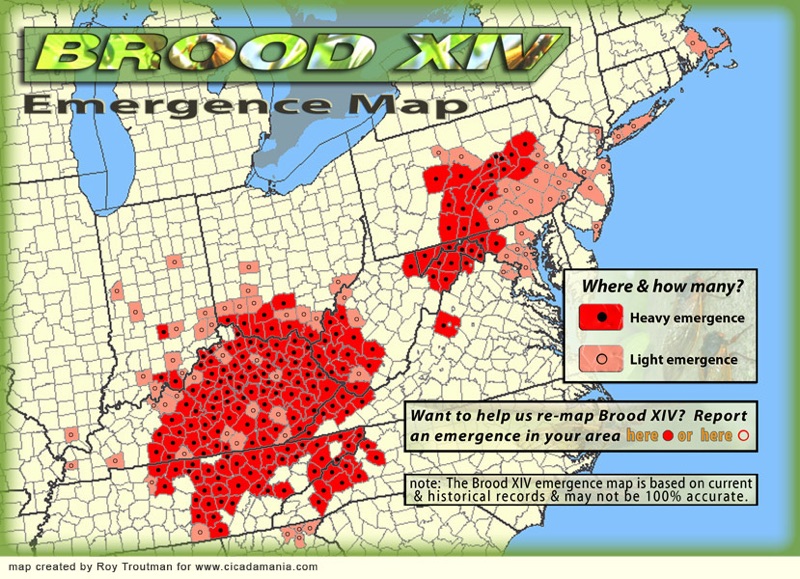Pool filter basket filled with cicadas by Brian Oliva.
These are Magicicada cicadas from Brood XIV that emerged in 2008.
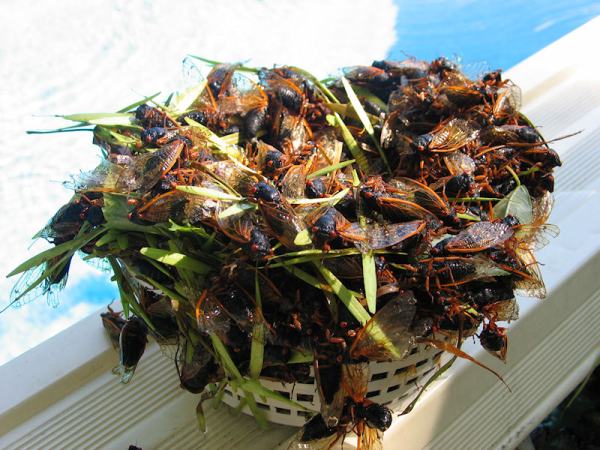
Pool filter basket filled with cicadas by Brian Oliva.
These are Magicicada cicadas from Brood XIV that emerged in 2008.

From Roy Troutman: “I shot a video back in 1991 of a 17 year Magicicada cassini singing right on my hand.”
These are the 17 most interesting 17-year cicada facts (IMHO). All these facts apply to 13-year cicadas as well.
People call these cicadas “locusts” but they are not true locusts — real locusts look like grasshoppers. The phrase “17-year cicada” indicates that they arrive every 17 years. The name “periodical cicadas” indicates that they arrive periodically and not each and every year. The scientific name for the Genus of these cicadas is Magicicada, and there are 3 types of 17 year Magicicadas: Magicicada septendecim, Magicicada cassini and Magicicada septendecula.
This is a true locust:
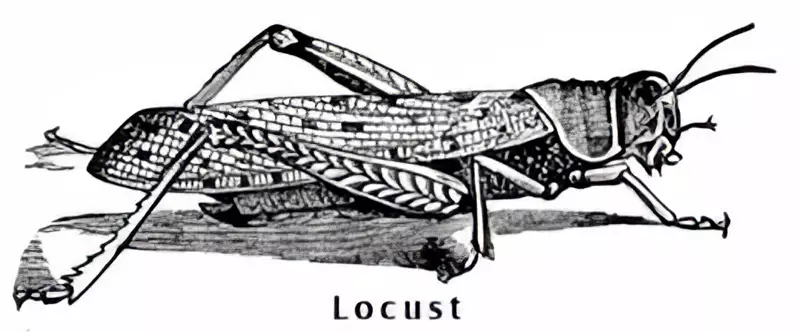
There are 13-year cicadas too! There are four species of 13-year cicadas: Magicicada tredecim, Magicicada neotredecim, Magicicada tredecassini, and Magicicada tredecula. Broods XIX, XXII and XXIII feature these cicadas.
Here’s a video that will help you identify the various species.
Most 17-Year Cicadas have red eyes, but they can also have white, gray, blue , or multi-colored eyes.
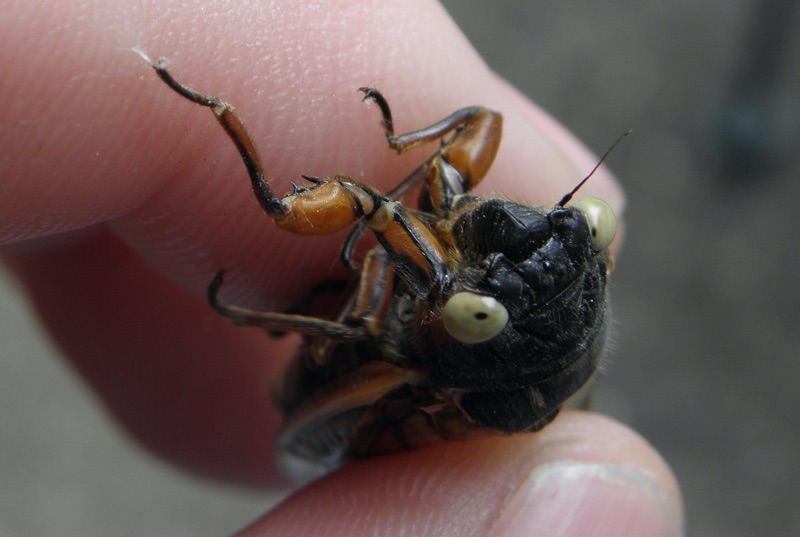
The Massospora cicadina fungus infects Magicicadas, destroying their abdomen and ability to reproduce. Often, their entire abdomen will fall off. The cicadas spread the fungus throughout their local colony via mating. The Massospora fungus is a cicada STD!
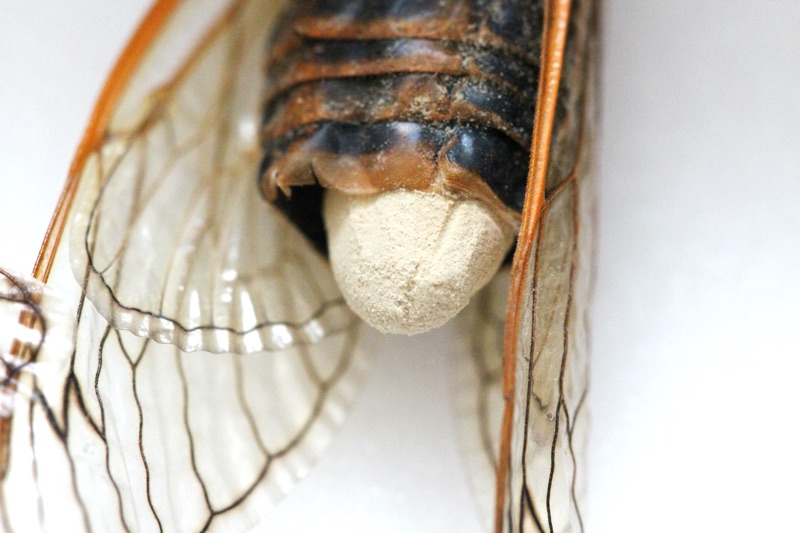
Cicadas think the sounds made by power tools and lawn maintenance equipment are made by cicadas. They get confused and will land on the people using the equipment! Pro-tip: cut your lawn in the early morning or near dusk when the cicadas are less active.

Cicadas have two, obvious, large, compound eyes, and three ocelli. Ocelli are three jewel-like eyes situated between the two main, compound eyes of a cicada. We believe ocelli are used to detect light and darkness. Ocelli means little eyes in Latin.
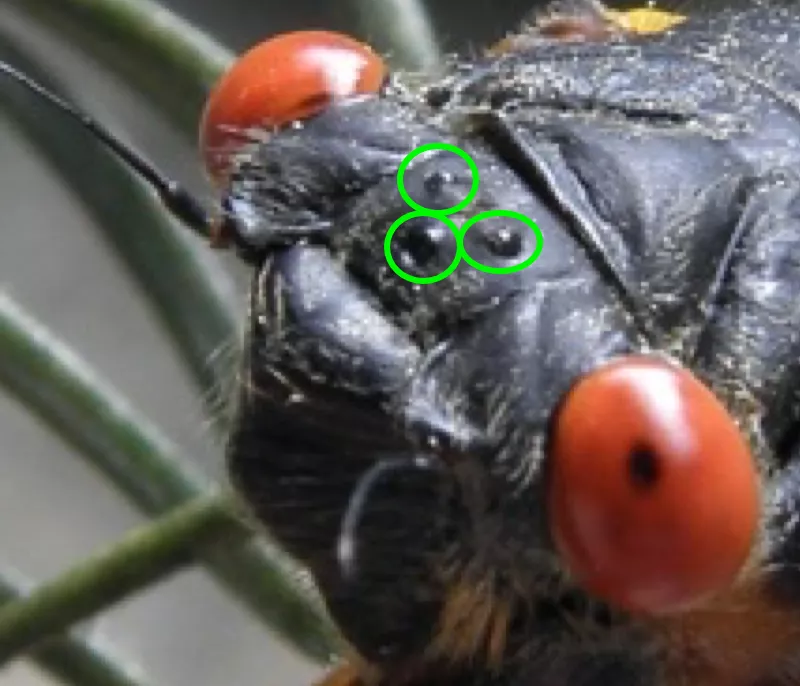
People eat them. You can barbecue it, boil it, broil it, bake it, sauté it. There, uh, cicada kabobs, cicada creole, cicada gumbo, panfried, deep fried, stir fried. There’s pineapple cicada, lemon cicada, coconut cicada, pepper cicada, cicada soup, cicada stew, cicada salad, cicada and potatoes, cicada burger, cicada pizza, cicada sandwich… that’s, that’s about it.

All wild animals and domestic pets will eat them. Dogs will gorge themselves until they choke. Squirrels will eat them like corn on the cob. Wild turkeys will grow fat and juicy on the cicada feast. Fish go crazy for them too — you can use them as bait, or use lures that mimic them.
Cicadas don’t eat solid foods like leaves or fruits. Instead they use their slender, straw-like mouth parts to drink tree fluids.
Yes cicadas pee, so wear a hat when walking under trees if that sort of thing bothers you. Cicadas drink tree fluids and then expel the excess fluid they do now need. People call it “honeydew” or “cicada rain”.
Only male cicadas make the loud sound they are famous for. Males have organs on their abdomen called tymbals. Muscles pop the tymbals in and out, which creates the sound we hear. Males make different calls for different reasons, and each species has a unique sound. Females can make sound too: they flick their wings to respond to males.
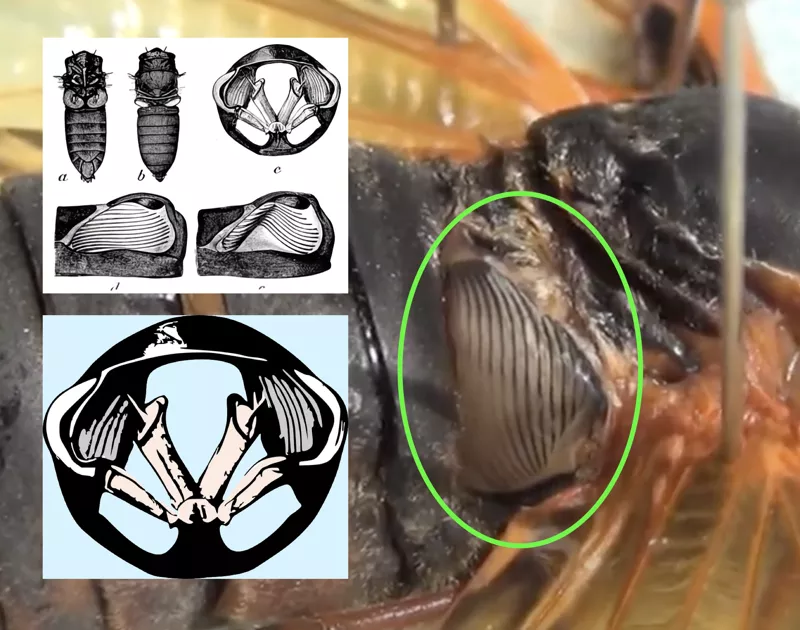
There are literally billions, if not trillions, of 17-year cicadas. Why? One theory suggests that a large number of cicadas overwhelms predators, so predators are never able to eat them all and cicadas, and many always survive to mate. This is a survival strategy called “predator satiation”.
The biggest concern about 17-year cicadas is their potential to damage young trees. The truth is they will damage limbs on the wimpiest of trees, so if you have weak, pathetic, wimpy ornamental trees in your yard you should consider placing netting around the trees if the cicadas visit your yard. Also, you can try hosing them off with water, placing insect barrier tape around the trunk of the trees, or picking them off like grapes! Or, plant strong, beefy American trees — that’s what I would do. Cicadas actually benefit the health of trees by aerating the soil around the roots and trimming the weak or damaged limbs.
Periodical cicadas that emerge in years before they are supposed to emerge are called stragglers.
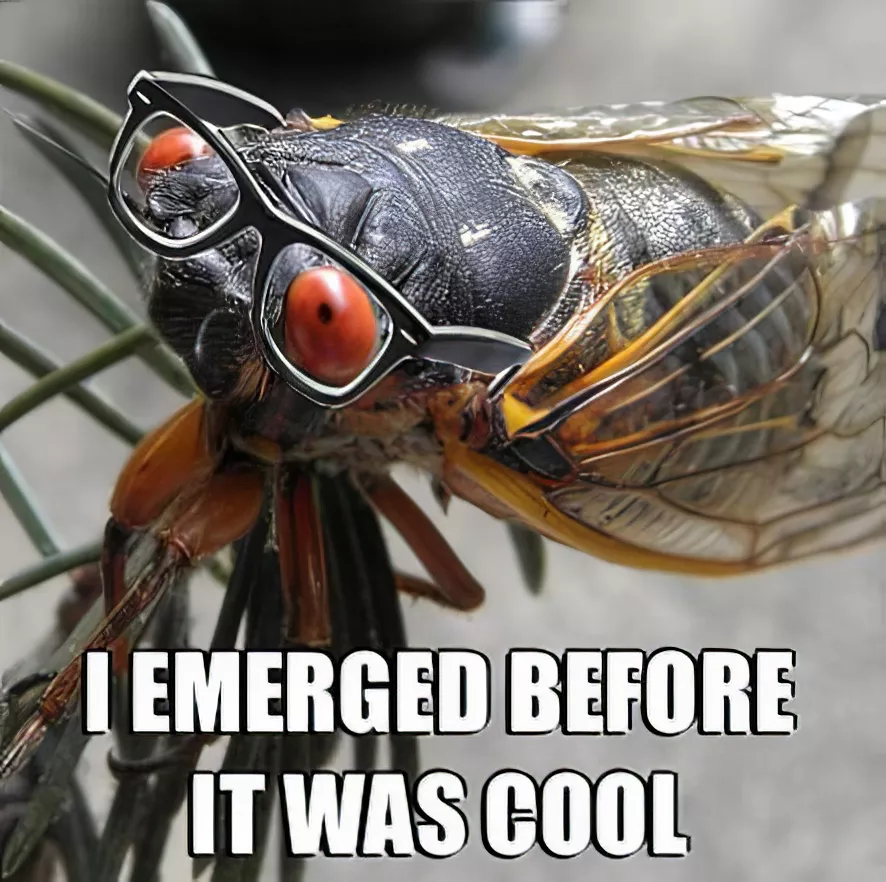
Scientist speculate that one reason why these cicadas emerge in 17 or 13 year cycles is because those are prime numbers. The fact that 13 & 17 are relatively large* prime numbers makes it difficult for predators to synchronize with them. (*Relative to the average lifespan of an animal.) Annual cicadas (cicadas that arrive every year) often have wasps specialized to prey on them; periodical cicadas have no such wasp because no wasp could evolve to synch with it.
Cicadas need to be warm to sing and fly around. Their dark skin absorbs the heat of the sun, which helps to warm them up.
Cicada Broods usually don’t overlap geographically, and it is very rare when they emerge in the same year. In 2024, Brood XIX and Brood XIII are both emerging.
###
If you have 18 minutes to spare, watch the video version of this article.
Here’s something neat. Roy Troutman discovered some Brood XIV Magicicadas emerging 4 years late in Ohio. That’s a “21 year cicada”. 🙂
Here’s the photos:
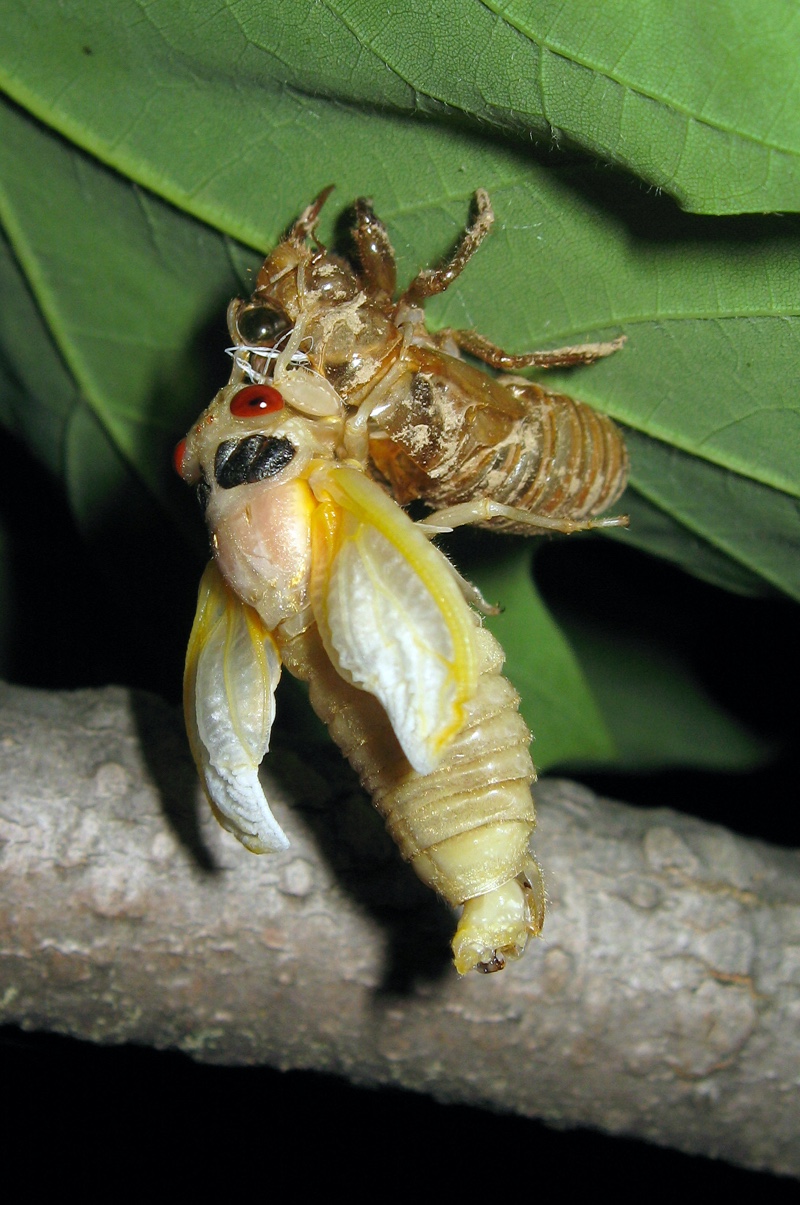
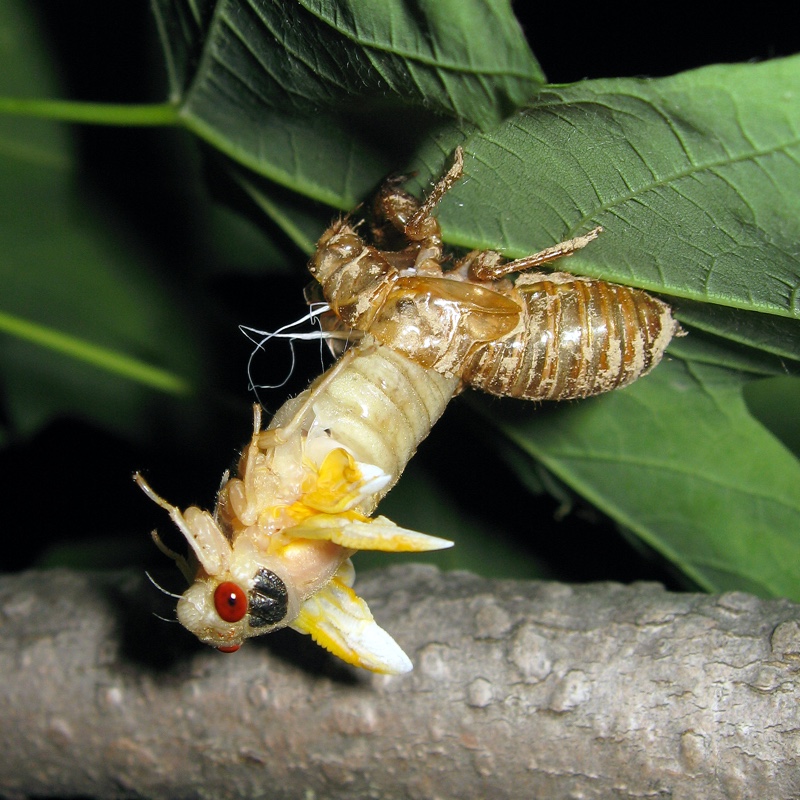
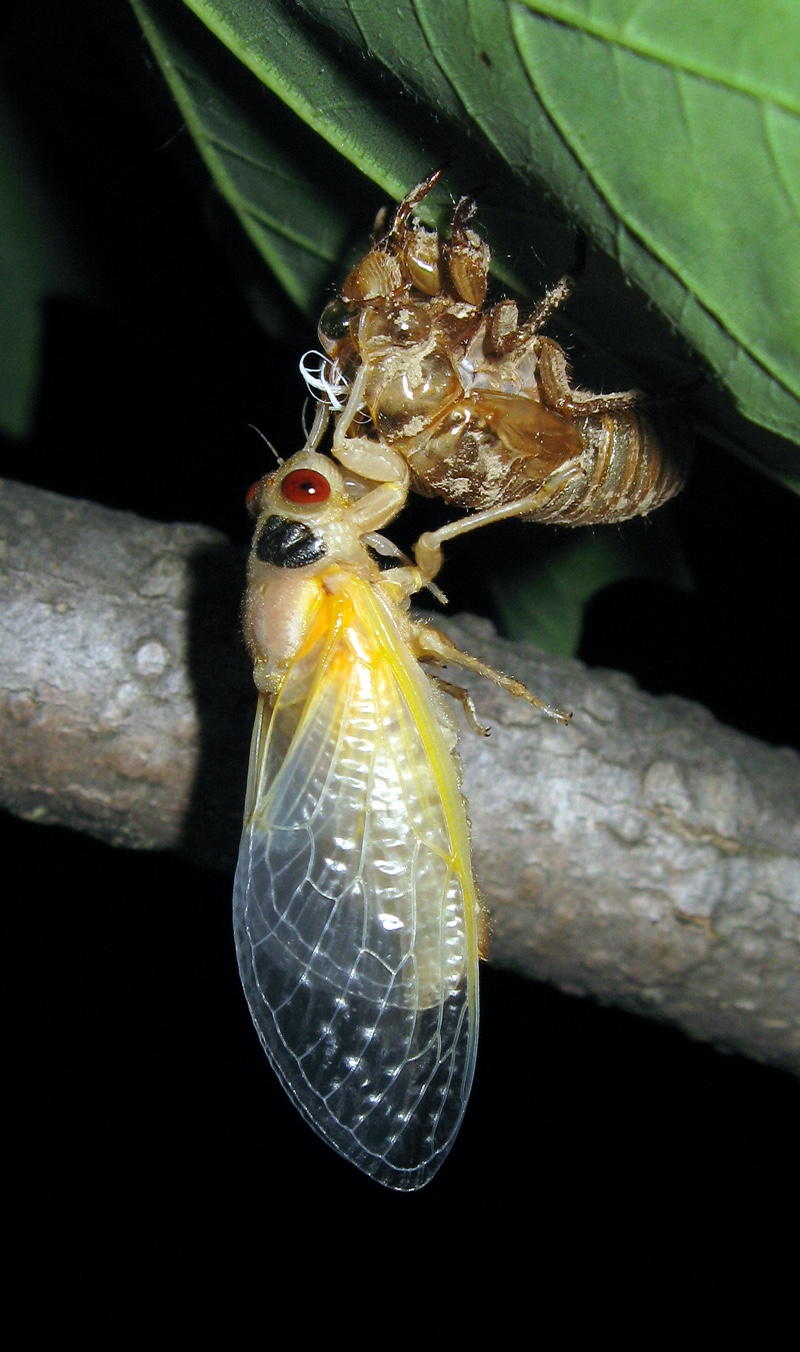
Gene Kritsky observed a similar unexpected emergence in 1995. See “The Unexpected 1995 Emergence of Periodical Cicadas (Homoptera: Cicadidae: Magicicada spp.) in Ohio”, Gene Kritsky and Sue Simon, Department of Biology, College of Mount St. Joseph, Cincinnati, OH. (OHIO J. SCI. 96 (1): 27-28, 1996). An excerpt from the article:
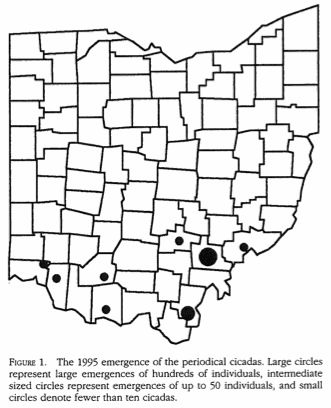
Roy Troutman found this Brood XIV Magicicada straggler in the Cincinnati Ohio area this weekend. This cicada emerged 2 years after it should have. Amazing.
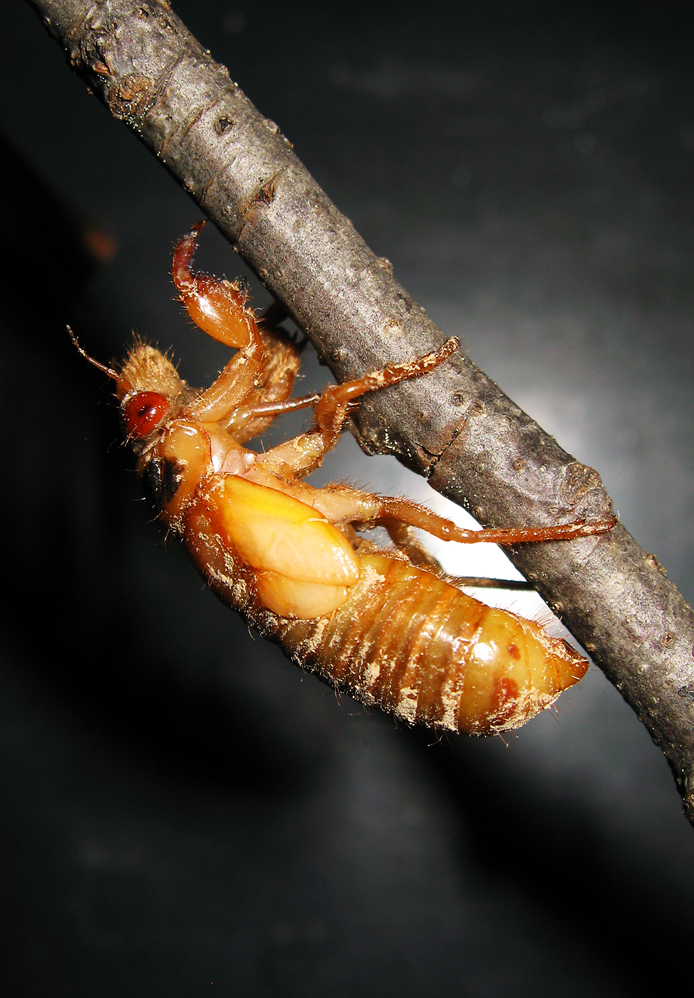
According to messages left on this site, as well as the magicicada.org map, Brood II cicadas have emerged in New Jersey and New York. I’m in New Jersey, and I plan on looking for cicadas this weekend.
So far:
Brood II stragglers are emerging (4 years ahead of schedule) in North Carolina, Virginia, Maryland, New Jersey and New York.
Brood XIV stragglers are emerging (1 year after they’re supposed to) in Ohio.
Update:
I found some skins in Metuchen, NJ tonight. Apologies for the quality of the photo — I only had my cell phone with me (cell phones were not good in 2008).
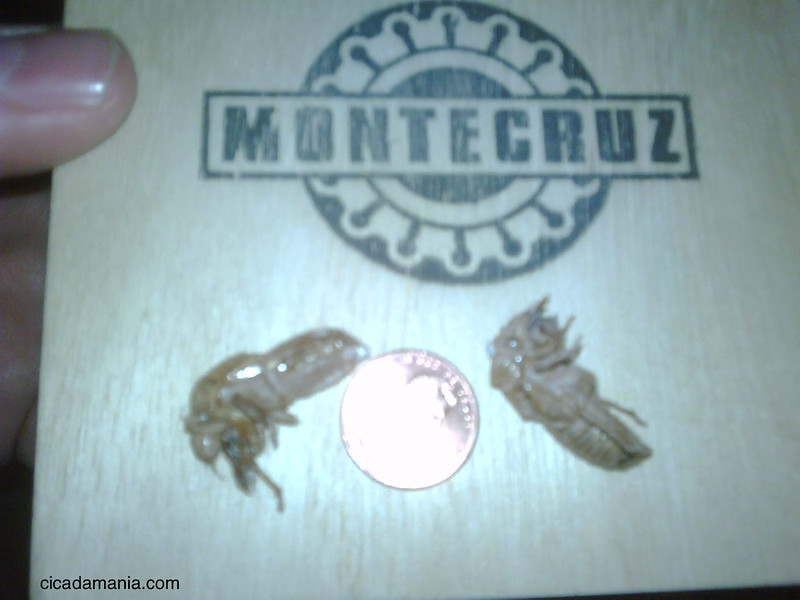
So, we already know that Brood II stragglers are emerging in places like North Carolina and Virginia. Brood II cicadas weren’t due until 2013, which means the Brood II cicadas emerging now are emerging 4 years ahead of schedule.
At the same time, Brood XIV stragglers are emerging in Ohio (Batavia, Ohio to be exact). Brood XIV emerged in full-force last year, which means some Brood XIV cicadas emerging now are emerging 1 year behind schedule.
If you compare the Brood II map and Brood XIV map you’ll see they don’t overlap. Hint: open each map in a different browser or browser tab and toggle between the two.
Here’s some pictures of the Brood XIV stragglers Roy Troutman found just tonight in Batavia, Ohio.
Tommy Joseph took these photos of Magicicada septendecim emerging Greensboro, North Carolina.
Update: looking at the maps, they probably aren’t brood XIV. Looks like they are Brood II accelerated 4 years, or Brood XIX accelerated 2 years (which would make them 13 year cicadas).
Big pile of skins:
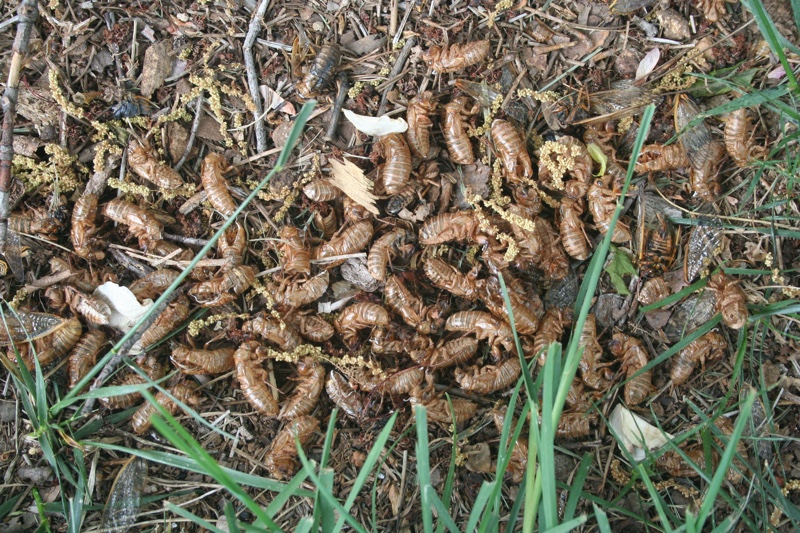
Magicicada with damaged wings:
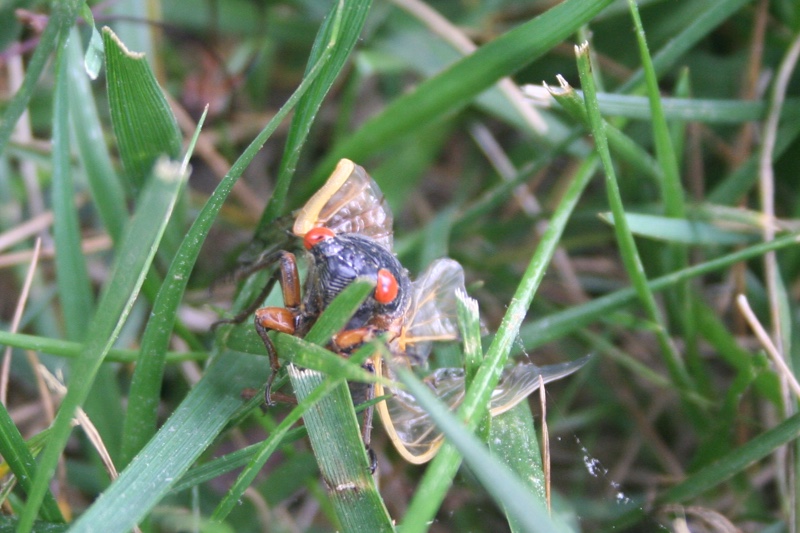
Adult Magicicada:
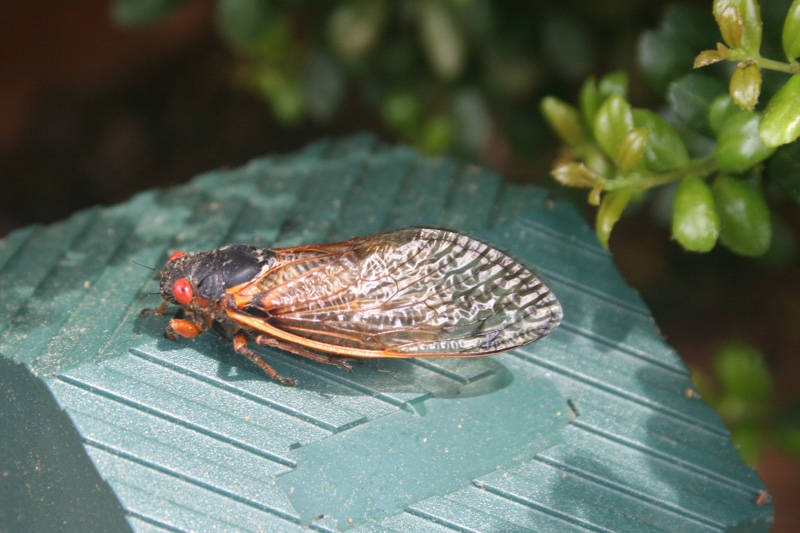
Exuvia/skin/shell:
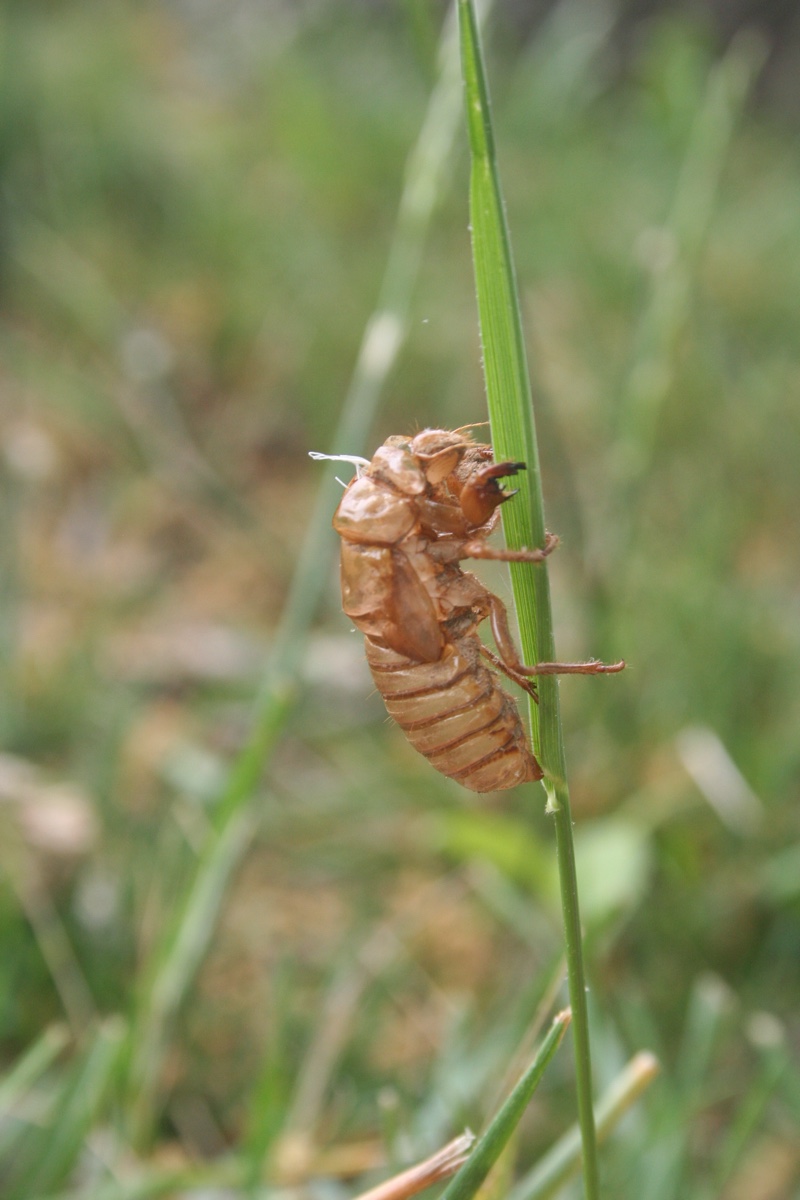
Male Magicicada septendecim:
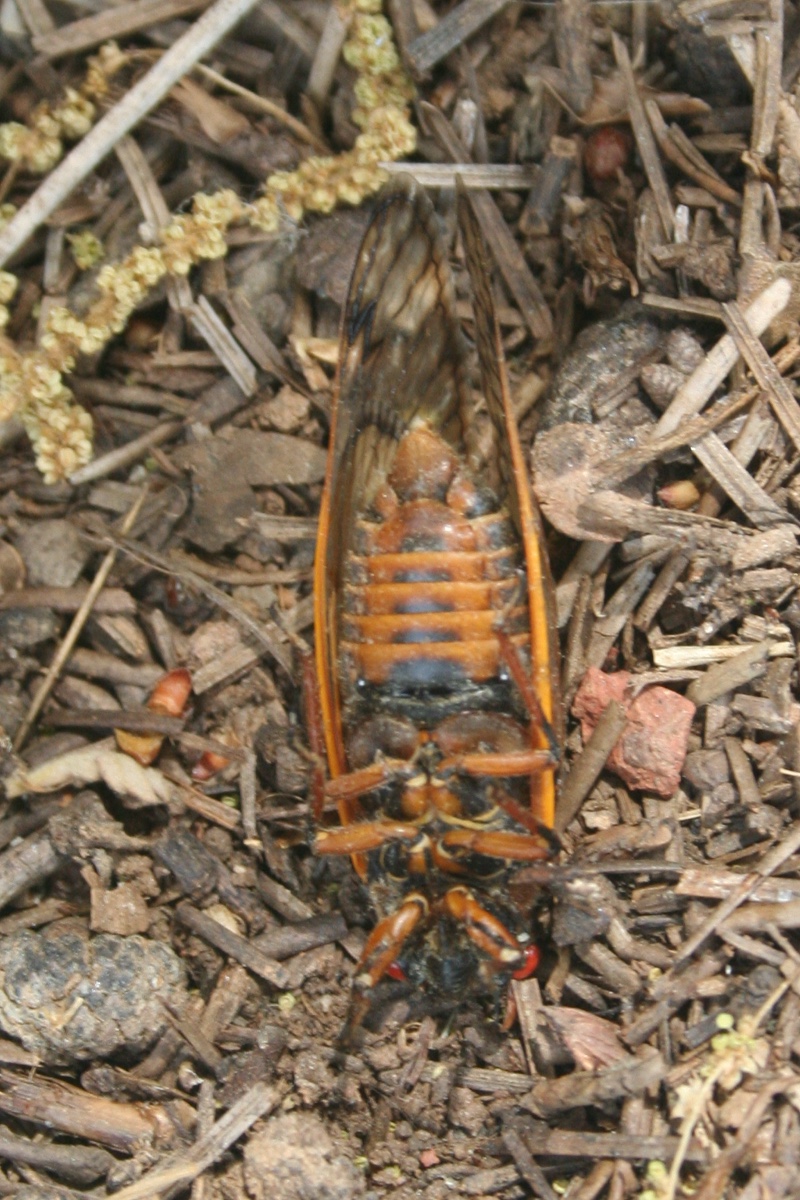
Exuvia/skins/shells on leaves:
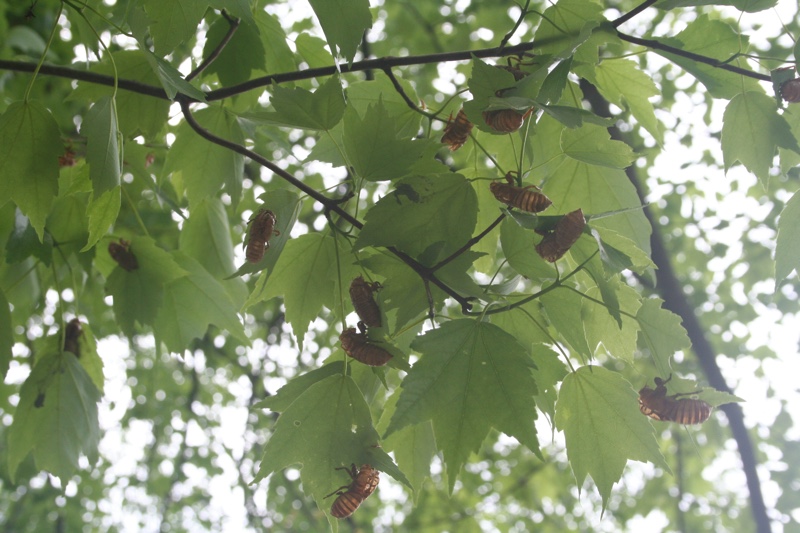
Be on the lookout for Brood XIV stragglers. A few Magicicada that didn’t emerge in 2008 should appear in 2009! Keep your eyes and ears peeled.
Here’s something special. Roy Troutman has uploaded some HD quality videos of Magicicadas to YouTube. Click the links to see the full-size versions.
Periodical Cicada sitting on leaf in HD:
Periodical Cicada’s heart pumping in HD:
Here’s a Brood XIV Roy created as well:
